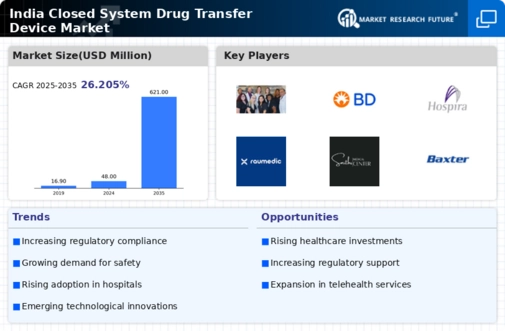The India Closed System Drug Transfer Device Market is a dynamic sector characterized by an increasing focus on safety and efficiency in drug handling within healthcare facilities. The competitive landscape is shaped by several factors including technological advancements, regulatory compliance, and the growing awareness of the risks associated with improper handling of hazardous drugs.
With the rising incidence of healthcare-associated infections and the heightened emphasis on worker safety, manufacturers are continuously innovating to enhance the functionality and reliability of their products. The market is also influenced by collaborations, partnerships, and acquisitions, which are a modus operandi for many players aiming to expand their reach and share in this burgeoning market.
NeoMed has established a significant presence in the India Closed System Drug Transfer Device Market by focusing on the development of advanced drug delivery systems that ensure the safety of healthcare workers and patients alike.
The company's offerings are characterized by their innovative design, which minimizes the risk of contamination and exposure, thus catering to the growing demand for safer handling of hazardous drugs. NeoMed’s strengths lie in its commitment to research and development, ensuring that its products are aligned with international safety standards and regulations.
The company is recognized for its exceptional customer service and support, fostering strong relationships with healthcare facilities across India, which bolsters its competitive advantage in this market. C.R. Bard has carved a niche for itself within the Indian Closed System Drug Transfer Device Market through a portfolio of products that emphasizes patient safety and operational efficiency.
Their key products cater to the specialized needs of various healthcare professionals dealing with oncology and other hazardous drug administrations, and they are known for their rugged design and reliability.
C.R. Bard’s strengths are underscored by its extensive distribution network and partnerships with local healthcare providers, allowing for widespread access to its innovative solutions. Additionally, the company's commitment to continuous improvement and investment in cutting-edge technologies further solidifies its market standing.
The recent mergers and acquisitions have enhanced their capabilities, enabling them to integrate advanced technologies and expand their range of offerings to meet evolving market demands in India effectively.






















